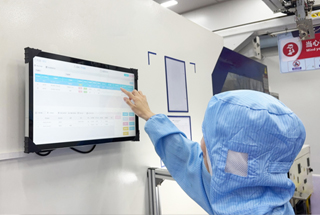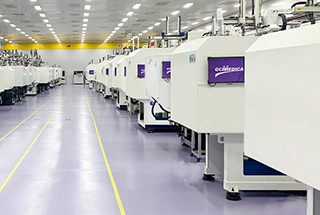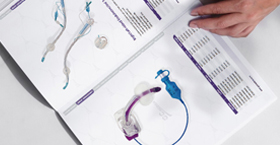Short lead: Choosing the right mucosal atomization device (MAD) helps you deliver intranasal medications reliably, safely and cost-effectively. This guide explains how MADs work, what specs matter, the top use cases (ED, anesthesia, pediatrics), purchase criteria, a model checklist, and practical tips to maximize clinical outcomes.
Quick summary — what you’ll learn
What a mucosal atomization device (MAD) does and why clinicians prefer it.
Key technical specs that affect performance and absorption.
Clinical use-cases and advantages.
How to compare models, calculate per-use cost, and procurement considerations.
A ready-to-copy supplier checklist and FAQs for procurement teams.
1. What is a mucosal atomization device (MAD)
A mucosal atomization device (MAD) is a small, disposable (or single-use) atomizer tip that attaches to a syringe and converts liquid medication into a fine mist for intranasal (and occasionally oropharyngeal or laryngeal) delivery. MADs are needle-free and enable rapid absorption across the richly vascular nasal mucosa, bypassing first-pass metabolism. Common trade names include MAD Nasal™ and similar atomizer products from medical suppliers.
2. Why clinicians use MADs — advantages at a glance
Rapid onset — intranasal atomization can achieve faster systemic absorption vs oral routes because it bypasses gastrointestinal first-pass metabolism.
Non-invasive & needleless — useful in pediatric, prehospital, and emergency settings where IV access is difficult.
Improved mucosal coverage and reduced spillage — the atomized mist reduces swallowing and oropharyngeal loss compared with simple drops.
Dosing flexibility — works with multiple agents (e.g., fentanyl, midazolam, dexmedetomidine) used for analgesia and sedation.
3. Technical specs that matter when comparing MADs
When evaluating models, focus on metrics that affect deposition, comfort and workflow:
Particle / droplet size (µm) — Many MADs atomize medications to roughly 30–100 microns; droplet size influences mucosal deposition and run-off.
Applicator tip design / nostril seal — a soft, conical plug seals the nostril and reduces expulsion; look for comfortable fit and one-hand operation.
Compatibility with syringes / connectors — Luer-lock compatibility and ease of priming (dead-space volume) are practical concerns in busy settings.
Priming & dead space — some protocols recommend adding ~0.1 mL to prime the device before first use (important for accurate dosing).
Disposability / single-use vs reusable — infection control policies often favor disposable tips; check manufacturer sterilization statements.
Packaging & unit quantity — case sizes and shelf life impact inventory management.
4. Clinical use-cases & evidence (what drugs and settings)
MADs are used across multiple settings — emergency departments, prehospital care (EMS), anesthesia premedication, and pediatric procedural sedation.
Intranasal fentanyl for analgesia: Widely used for procedural and acute analgesia; intranasal delivery via MAD is common in EDs and prehospital settings.
Intranasal midazolam for sedation: Frequently used in pediatrics for preoperative or procedural sedation; many institutions use MADs for administration.
Dexmedetomidine & other agents: Intranasal delivery of certain sedative agents has been adopted in specific clinical pathways.
Clinical summaries of intranasal drug delivery describe pharmacokinetic benefits and common indications for MAD use.
5. Comparing MADs
Below is a practical, plain-text comparison format your procurement team can use:
| Feature / Consideration | Example: MAD Nasal style | Generic atomizer | Bottle-pump atomizer |
|---|---|---|---|
| Typical particle size | ~30–100 µm | Manufacturer dependent | Manufacturer dependent |
| Tip fit & seal | Soft conical plug; good nostril seal | Variable | Better for repeated dosing |
| Syringe compatibility | Luer-lock | Luer-lock | Bottle/pump |
| Single-use packaging | Often packaged in multi-packs | Varies | Reusable/Disposable variants |
| Typical clinical uses | ED, pediatrics, anesthesia | ED, field use | Clinic / repeated dosing |
(Replace example names with the exact model numbers you evaluate.)
6. How to choose the right MAD — 7 key procurement questions
What drugs and volumes will you deliver? (e.g., fentanyl concentration, midazolam dosing)
Is single-use required by your infection control policy?
What particle size or deposition characteristics do you need for your indication? (confirm with manufacturer data)
Does the device interface cleanly with your syringes / workflows? (requires Luer compatibility and low dead-space)
What is the per-use cost including syringe, tip, and disposal?
Are there clinical data or official guidelines supporting use of this specific device for your intended drugs?
What training or priming protocols will be included when you roll it out? (document priming volume, administration position and staff training).
7. Workflow & dosing practicalities (clinical tips)
Prime the device: many protocols instruct adding ~0.1 mL extra for the first dose to prime dead space — then draw the accurate therapeutic dose.
Divide large volumes between nostrils: for adult doses >1 mL per nostril, split doses to reduce loss and improve absorption.
Use correct head position and nostril seal: a gentle tilt and proper nostril seal prevent anterior run-off and swallowing.
Document lot numbers & expiry: for recall traceability and safe inventory management.
8. Regulatory & procurement considerations
Confirm the device's regulatory status for your market (e.g., FDA listing/clearance in the U.S., CE marking in Europe, or applicable local medical device registration in China). Manufacturer product pages and distributor catalogs usually list regulatory clearances.
For controlled substances, ensure that your institution's controlled-drug policies cover intranasal formulations and that staff are trained on dosing/monitoring.
9. Cost & budget: calculating per-use cost
To calculate a realistic per-use cost, add:
Unit cost of MAD tip (pack of X) divided by X.
Syringe & needle (if used) (or syringe cost if needleless).
Staff time for admin (seconds to minutes).
Disposal costs (sharps / biohazard if applicable).
Training amortization (divide training cost over expected device uses).
Example: if a 25-pack of MAD tips costs $50 → tip cost = $2.00/use, plus $0.25 syringe, disposal $0.05 → approx $2.30 per administration (example numbers only — use your supplier quotes).
10. Implementation checklist (copy/paste for procurement)
Confirm regulatory clearance for intended market.
Request technical datasheet (particle size, tip dimensions, dead space).
Request sample units for clinical trial or evaluation.
Build training & priming protocol (include 0.1 mL prime note).
Calculate per-use cost & budget for inventory.
Update hospital/EMS policy documents and drug administration protocols.
Pilot for 4–8 weeks, collect clinician feedback and adverse event reports.
11. Top pitfalls and how to avoid them
Using an incorrect volume/dose without priming → always prime per manufacturer/hospital guidance.
Assuming all MADs have identical particle size → verify manufacturer data; subtle differences affect deposition.
Skipping staff training → a short training session reduces administration errors and run-off.
12. FAQ
Q: What particle size does a MAD produce?
A: Many MADs atomize to roughly 30–100 microns.
Q: Can I deliver fentanyl with a MAD?
A: Yes — intranasal fentanyl is commonly administered via MADs in EDs and pediatrics; clinical protocols describe dosing regimens and rapid absorption profiles.
Q: How much extra should I prime the MAD?
A: Some institutional protocols recommend adding ~0.1 mL to prime the device for the first dose to account for dead space. Check your device’s instructions and local guidelines.
Q: Is MAD single-use?
A: Most clinical workflows favor disposable single-use MAD tips for infection control; verify with your supplier.
13. Quick conclusion
MADs are a powerful, low-cost way to deliver intranasal medications across emergency, anesthesia and pediatric settings. When selecting a MAD, prioritize droplet size data, syringe compatibility, priming instructions, and regulatory clearance. Run a short pilot, capture clinician feedback, and pair the device rollout with a concise training module.


 Français
Français Español
Español Products
Products

 About Us
About Us











